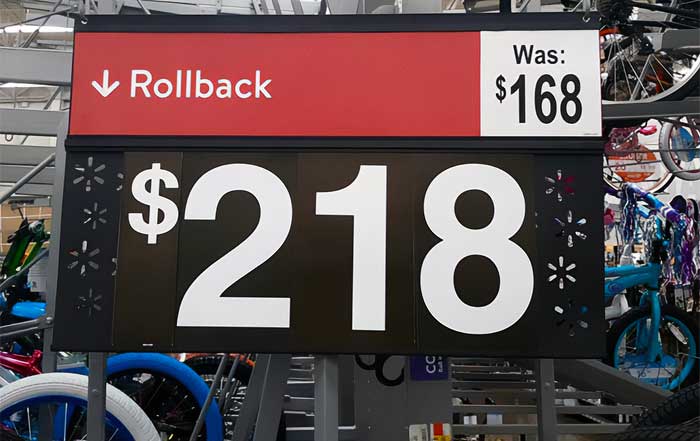Aging in 2026: How the World Is Rewriting the Future of Elder Care
A New Demographic Era Takes Hold
By 2026, it has become unmistakably clear that population aging is no longer a distant projection but a defining reality of economic, social, and political life. Advances in healthcare, biotechnology, digital connectivity, and overall living standards have steadily pushed life expectancy higher across much of the world, from the United States and Canada to Japan, Germany, and emerging economies in Asia and South America. At the same time, fertility rates have fallen in many regions, reshaping age structures in ways that are now transforming everything from labor markets to housing, public finance, and consumer behavior.
For usa-update.com, which focuses on the critical intersections of economy, business, regulation, technology, and lifestyle, the aging of societies is not a niche topic but a central lens through which to understand the trajectory of the U.S. and the global system. The growth of older and aging populations is driving new pressures on healthcare and pensions, accelerating innovation in medical and digital technologies, and forcing governments and corporations to rethink long-standing assumptions about work, retirement, and social responsibility. Readers seeking deeper context on how these demographic forces intersect with macroeconomic trends can explore the evolving U.S. economic landscape, where aging is now one of the most influential structural factors.
While the trend is most visible in advanced economies, it is increasingly global in scope. Japan, Italy, Spain, and Germany continue to have some of the oldest age profiles in the world, but fast-aging societies now include China, South Korea, Thailand, Brazil, and even some middle-income countries in Eastern Europe and Latin America. Meanwhile, younger regions such as sub-Saharan Africa are beginning to experience longer lifespans, even as they remain demographically youthful. This diversity of trajectories means that aging is not a uniform story but a mosaic of challenges and opportunities that differ by country, culture, and stage of development.
The Global Map of Aging in 2026
Demographic data compiled by organizations such as the United Nations and national statistical agencies show that the share of people aged 65 and older is rising faster than at any point in recorded history. In the United States, the aging of the Baby Boomer generation continues to reshape the population pyramid; by the mid-2030s, older Americans are projected to account for more than one-fifth of the population, with adults over 65 expected to outnumber children under 18 for the first time. Similar or even more extreme dynamics can be observed in Europe, where countries like France, Sweden, and Italy face steadily rising old-age dependency ratios, and in East Asia, where Japan and South Korea are grappling with unprecedented levels of population aging.
In North America, Canada mirrors many U.S. trends, with the share of seniors growing rapidly and placing new demands on provincial health systems, pension programs, and local housing markets. In Europe, the demographic squeeze is particularly intense in Germany, Spain, and Italy, where low fertility and increasing longevity have combined to create a structural imbalance between working-age contributors and retirees. Policymakers there are engaged in difficult debates over pension reform, labor migration, and the redesign of social welfare systems.
In Asia, the speed of aging is especially striking. China has moved from a youthful society to an aging one in just a few decades, the legacy of past family planning policies and rapid economic development. Japan remains the world's most aged society, while South Korea, Singapore, and Thailand are not far behind in demographic terms. Even as Africa remains the youngest continent globally, improvements in healthcare and disease control are beginning to extend lifespans, which will gradually introduce aging-related challenges in the decades ahead. For readers interested in how these demographic shifts intersect with geopolitics, trade, and cross-border investment, usa-update.com offers additional context on international economic and policy trends.
Across this global map, one theme stands out: aging is no longer a localized issue but a shared structural transformation. It is driving new forms of international cooperation, redefining competitive advantages among nations, and reshaping the expectations of citizens about what it means to age with security and dignity in the 21st century.
Healthcare Systems Under Pressure and Reinvention
Healthcare sits at the center of the aging debate, because longevity gains have come with a parallel rise in chronic illness. Older adults are disproportionately affected by conditions such as cardiovascular disease, diabetes, arthritis, cancer, and neurodegenerative disorders like Alzheimer's and other dementias. Managing these long-term conditions requires sustained engagement with healthcare systems, from primary care to specialist services, pharmaceuticals, and long-term care facilities.
In the United States, the twin public programs of Medicare and Medicaid remain the backbone of coverage for older adults and low-income populations, but they are under growing financial strain as beneficiary numbers rise and new therapies, including high-cost biologics and gene-based treatments, enter the market. Debates in Washington, D.C. increasingly revolve around how to protect these programs' solvency while continuing to expand access and quality. Proposals include value-based payment models, more aggressive negotiation on drug pricing, and expanded use of digital health to reduce unnecessary hospitalizations. For those monitoring how these debates intersect with broader fiscal and regulatory trends, usa-update.com provides ongoing updates in its regulation and policy coverage.
Globally, countries have responded to aging in different ways, reflecting their institutional histories and political cultures. Scandinavian nations such as Sweden, Norway, and Denmark have long invested in integrated health and social care systems that emphasize home-based support, community services, and coordinated long-term care. In contrast, some middle-income countries in South America and Asia are still building the infrastructure needed to support a rapidly growing elderly population, often relying heavily on family caregiving with limited formal support. International bodies like the World Health Organization have increasingly focused on "healthy aging" frameworks that encourage countries to invest in prevention, early intervention, and age-friendly health services.
At the same time, healthcare is undergoing a technological transformation. Telemedicine, remote monitoring, AI-assisted diagnostics, and digital therapeutics have moved from experimental to mainstream, especially in the wake of the COVID-19 pandemic earlier in the decade. Large technology and healthcare firms, including Apple, Google, Microsoft, and Philips, are investing in platforms that allow continuous health monitoring for seniors, integrating wearable devices, smart home sensors, and cloud-based analytics. Readers can learn more about how technology is reshaping healthcare and other sectors, as these innovations are increasingly central to the sustainability of aging societies.
The Economic Consequences of an Older World
The economic implications of aging are profound and multifaceted, touching on growth prospects, public debt, labor markets, and consumer behavior. As the share of older adults rises, many countries face the prospect of slower labor force growth or even outright declines in the working-age population. This has already been evident in Japan and Germany, where tight labor markets, wage pressures, and concerns about long-term productivity have become structural issues rather than cyclical ones.
In the United States, the retirement of Baby Boomers has tightened labor supply in several sectors, from healthcare and manufacturing to logistics and professional services. To offset these trends, policymakers and business leaders are exploring a mix of strategies: promoting higher labor force participation among older workers, encouraging immigration to replenish the workforce, and accelerating automation and AI adoption to augment or replace certain tasks. The interplay between demographic aging, automation, and immigration is now a central theme in economic policy debates and corporate strategy sessions alike.
Public finances are also under strain as pension and social security obligations rise. The U.S. Social Security system faces long-term funding challenges if reforms are not enacted, while many European systems have already begun raising statutory retirement ages or adjusting benefit formulas. These measures are politically sensitive, as they touch on intergenerational equity and the social contract between workers and retirees. For readers tracking how these fiscal pressures intersect with markets, interest rates, and investment trends, usa-update.com offers in-depth perspectives in its finance and markets section.
At the same time, aging is reshaping consumer markets in ways that create new opportunities. Older adults often redirect spending toward healthcare, financial services, home modifications, and experiences that enhance quality of life, such as wellness travel and cultural activities. The so-called "silver economy" is now a major focus for companies in sectors ranging from pharmaceuticals and medical devices to travel, hospitality, and consumer technology. Understanding these shifts is increasingly essential for businesses seeking growth in mature markets, and readers can stay informed about these dynamics through usa-update.com's business coverage.
Housing, Cities, and the Built Environment
One of the most visible manifestations of aging is the changing demand for housing and community design. Many seniors express a strong preference to "age in place," remaining in their own homes and communities for as long as possible. Yet much of the existing housing stock in the United States, Canada, and Europe was not designed with aging in mind; it often lacks features such as step-free entrances, wide doorways, grab bars, and good lighting that can significantly reduce fall risk and enhance independence.
As a result, architects, developers, and urban planners are increasingly prioritizing age-friendly design principles. Initiatives such as the AARP Livable Communities program and the World Health Organization's Age-Friendly Cities framework are encouraging municipalities to rethink zoning, transportation, public spaces, and housing codes to better accommodate older residents. Accessible transit, walkable neighborhoods, mixed-use developments, and proximity to healthcare and social services are all becoming central considerations in city planning.
Assisted living facilities and senior living communities have also evolved. Instead of purely clinical environments, many newer developments integrate hospitality, wellness, and social programming, aiming to provide not just care but a sense of community and purpose. Companies like Brookdale Senior Living and Sunrise Senior Living have expanded offerings that include fitness centers, cultural activities, and technology-enabled safety systems. At the same time, intergenerational housing models, where students or young professionals live alongside older adults, are gaining attention in countries such as Germany, the Netherlands, Canada, and increasingly in parts of the United States, as they address both social isolation among seniors and affordability challenges for younger people.
The built environment is thus becoming a critical lever in how societies manage aging, influencing health outcomes, social connection, and economic participation. For readers interested in how these trends intersect with broader lifestyle and community developments, usa-update.com regularly examines these themes in its lifestyle and community coverage.
🌍 Global Aging in 2026
Explore demographic shifts reshaping our world
Aging Across the Globe
🇺🇸 North America
Baby Boomers continue reshaping the population pyramid. By mid-2030s, adults over 65 will outnumber children under 18 for the first time in U.S. history. Canada mirrors these trends with rapidly growing senior populations.
🇪🇺 Europe
Germany, Spain, and Italy face intense demographic squeeze with low fertility and increasing longevity. Old-age dependency ratios rising steadily across France, Sweden, and other nations.
🇯🇵 East Asia
Japan remains the world's most aged society. China transitioned from youthful to aging in just decades. South Korea, Singapore, and Thailand rapidly following similar trajectories.
🌏 Emerging Markets
Brazil, Thailand, and Eastern European nations now experiencing fast-aging dynamics. Even younger regions in sub-Saharan Africa seeing gradual lifespan extensions.
Cultural Attitudes and the Social Meaning of Aging
Beyond economics and infrastructure, aging is deeply shaped by culture. In many East Asian societies, including China, Japan, and South Korea, traditions of filial piety and respect for elders have historically placed primary caregiving responsibilities on families, often within multigenerational households. While these norms are evolving under the pressures of urbanization, smaller family sizes, and changing gender roles, they continue to influence how elder care is organized and perceived.
In much of North America and Western Europe, more individualistic cultural frameworks have tended to normalize the use of professional care services and residential facilities, although family members still play central emotional and logistical roles. Over the last decade, however, there has been a notable shift in how aging is portrayed and understood. Older adults are increasingly recognized as active contributors, whether through extended work, volunteering, caregiving for grandchildren, or entrepreneurial ventures launched later in life. This reframing challenges stereotypes of dependency and decline.
Media and entertainment have played an important part in this shift. Streaming platforms such as Netflix, premium networks like HBO, and major studios have begun to feature more nuanced portrayals of older protagonists and intergenerational storylines, reflecting and shaping public attitudes. Coverage of aging-related issues in reputable outlets like The New York Times and BBC News has also become more sophisticated, highlighting both systemic challenges and inspiring examples of active aging.
For usa-update.com, which regularly analyzes how cultural narratives intersect with policy and markets, the treatment of aging in media and entertainment is not a side story but part of the broader ecosystem that shapes expectations, consumer behavior, and political will. Readers can explore how entertainment mirrors and influences social change, including in areas related to age, work, and family.
Work, Skills, and the Evolving Concept of Retirement
Labor markets are being transformed by aging in ways that are especially visible in 2026. Rather than viewing retirement as a sharp cutoff at a fixed age, many individuals and employers now embrace a more flexible, phased approach. Older workers often seek part-time roles, consulting arrangements, or portfolio careers that allow them to stay engaged while adjusting workloads. Employers, facing tight labor markets and the loss of institutional knowledge, are increasingly willing to accommodate these preferences.
Major corporations such as IBM, Deloitte, and General Electric have implemented initiatives to retain senior talent, including mentorship programs, flexible schedules, and structured "returnship" or late-career pathways. At the same time, the rapid pace of technological change demands continuous upskilling. Online platforms like Coursera and edX have seen growing participation from learners in their 50s, 60s, and beyond, who are acquiring digital skills, project management expertise, or even entirely new professional competencies.
Public policy is evolving in response. Some countries have introduced incentives for employers to hire or retain older workers, while others are revising pension systems to make working longer financially attractive. Immigration policy also plays a critical role, as countries like the United States, Canada, Germany, and Australia look to younger migrants to help balance demographic pressures and fill labor shortages, particularly in caregiving, healthcare, and technology-intensive industries.
For readers tracking how these shifts are playing out in the U.S. labor market and beyond, usa-update.com provides ongoing analysis in its employment and jobs coverage, examining the intersection of demographics, technology, and workforce policy.
Technology as Infrastructure for Aging
By 2026, technology has become a core infrastructure for aging societies, not just an optional add-on. Smart home systems, wearable devices, AI-driven health tools, and robotics are increasingly integrated into everyday life for older adults.
Smart homes equipped with voice-activated assistants, motion sensors, and remote monitoring capabilities can detect falls, track daily activity patterns, and alert caregivers or medical professionals when anomalies occur. Technology leaders like Amazon, Google, and Samsung are tailoring devices and interfaces to be more accessible for seniors, focusing on ease of use, clear visual design, and robust privacy protections.
Robotics and artificial intelligence are particularly advanced in countries facing acute caregiver shortages, such as Japan, where robotic assistants support mobility, lifting, and even social interaction. In Europe and North America, AI is more commonly deployed in the background, analyzing health data from wearables, electronic health records, and imaging systems to assist clinicians in early diagnosis and personalized treatment planning.
Telemedicine, which saw a dramatic expansion earlier in the decade, has now matured into a standard component of healthcare delivery. Organizations like Teladoc Health, major hospital systems, and integrated care networks rely on virtual consultations to extend access, reduce travel burdens for older patients, and manage chronic conditions more proactively. For readers interested in these technological shifts across sectors, usa-update.com continues to highlight key developments in its technology-focused reporting.
Financing Longer Lives: Households, Markets, and States
The financial dimension of aging is complex and increasingly central to household decision-making, corporate strategy, and public policy. For individuals and families, the challenge lies in ensuring that savings, investments, and insurance arrangements are sufficient to support potentially decades of retirement, with uncertain health trajectories and evolving care needs.
Financial institutions such as Fidelity Investments, Vanguard, and Charles Schwab have expanded their offerings in retirement planning, annuities, and long-term care insurance, while also developing tools to help older clients manage cognitive decline risks and guard against fraud. The financial services industry is recognizing that longevity risk-the possibility of outliving one's assets-is now a core concern for middle- and upper-income households, not just a theoretical actuarial issue.
At the public level, governments are wrestling with how to finance healthcare and pensions sustainably. In the United States, debates over the future of Social Security and Medicare are intertwined with broader discussions about tax policy, federal debt, and intergenerational fairness. In Europe, countries such as France and Italy have experienced major social protests in response to pension reforms, underscoring how politically sensitive these issues remain. International organizations, including the International Monetary Fund and the OECD, have increasingly highlighted demographic aging as a core risk to long-term fiscal stability.
For businesses, aging creates both risk and opportunity. Healthcare providers, pharmaceutical companies like Pfizer, Johnson & Johnson, and Novartis, and medical device manufacturers are investing heavily in treatments and technologies tailored to age-related conditions. At the same time, sectors such as travel, hospitality, and consumer goods are redesigning products and services for older customers, from wellness-focused cruises to accessible financial apps.
Readers can follow these developments and their implications for markets and corporate strategy through usa-update.com's dedicated finance and business reporting, where aging is increasingly treated as a fundamental driver of long-term trends.
Society, Community, and the Human Side of Aging
Beneath the statistics and policy debates lies the human reality of aging, which is experienced in families, neighborhoods, and communities. Social isolation and loneliness are now recognized as significant public health challenges for older adults, associated with higher risks of depression, cognitive decline, and even mortality. To address this, communities across the United States, Canada, Europe, and parts of Asia are investing in social infrastructure: community centers, volunteer programs, intergenerational initiatives, and accessible cultural events.
Nonprofit and faith-based organizations play a vital role. In the U.S., Meals on Wheels and similar programs provide not only nutrition but regular human contact, while religious institutions often serve as hubs of social connection and support for older congregants. Municipal governments are partnering with these organizations to ensure that vulnerable seniors are not overlooked, particularly in rural areas or low-income urban neighborhoods.
Events and cultural activities tailored to older adults-from local theater and arts workshops to senior-focused sports and wellness programs-are increasingly recognized as essential components of healthy aging strategies. They help maintain cognitive function, foster a sense of purpose, and strengthen community bonds. Readers can follow coverage of events and cultural initiatives that highlight how communities are responding creatively to the needs of aging populations.
Policy Innovation and International Learning
As aging becomes a shared global challenge, countries are looking to one another for ideas and models. Japan's experience with long-term care insurance and robotics, Germany's efforts to integrate immigrants into its workforce and care systems, and Scandinavia's integrated health and social care frameworks are all being studied by policymakers worldwide. The World Health Organization and other international bodies have convened forums and working groups to facilitate the exchange of best practices on healthy aging, age-friendly cities, and long-term care financing.
In the United States, policy innovation is occurring at multiple levels. Federal debates focus on entitlement reform and healthcare financing, while states experiment with Medicaid waivers for home- and community-based services, caregiver support programs, and new models of integrated care. Local governments are exploring zoning changes, transportation initiatives, and public-private partnerships to create more age-inclusive environments.
For readers who want to understand how these policy experiments fit into the broader international context, usa-update.com regularly examines cross-country comparisons and global trends in its international and news coverage, highlighting both successes and ongoing challenges.
Looking Ahead: Aging as a Strategic Priority
As of 2026, it is evident that aging is not a temporary wave but a long-term structural shift that will shape the trajectory of the United States, North America, and much of the world for the rest of the century. The "gray wave" is influencing everything from interest rates and housing demand to healthcare innovation and the design of workplaces. Nations that treat aging as a strategic priority-integrating it into economic planning, urban development, education, and technological innovation-are likely to fare better than those that view it as a narrow social policy issue.
Technology will continue to be a powerful enabler, but it is not a substitute for thoughtful policy and strong social institutions. Investments in preventative health, age-friendly infrastructure, and robust safety nets will be essential to ensure that longer lives are not only lived, but lived well. At the same time, cultural shifts that value intergenerational connection, respect the contributions of older adults, and challenge ageist assumptions will be crucial in building cohesive societies.
For usa-update.com, the aging of populations is a central theme that cuts across its coverage of economy, business, technology, regulation, lifestyle, and international affairs. Whether readers are interested in how demographic change affects investment strategies, public budgets, employment prospects, or community life, the implications of aging are never far from the surface. Those seeking a broad view of how these forces come together can always return to the usa-update.com homepage for integrated analysis and updates.
Ultimately, aging is not only about systems and structures; it is about people-parents, grandparents, neighbors, colleagues, and eventually ourselves. The way societies respond to the needs and potential of older adults will be a defining test of their values and resilience. In that sense, the story of aging in 2026 is not a story of decline, but an invitation to design economies, communities, and institutions that work for all generations, from youth to advanced age.










